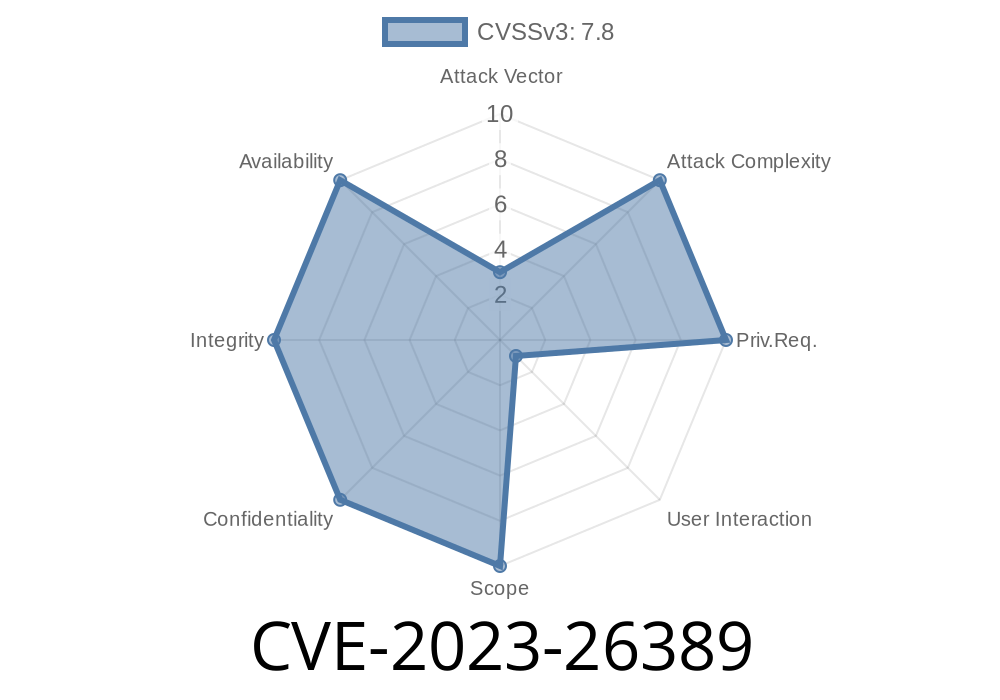Adobe Substance 3D Stager is a powerful tool for advanced creative design, allowing users to create and customize 3D assets. However, a recently discovered vulnerability in Adobe Substance 3D Stager version 2..1 and earlier versions has been identified, posing a potential security risk. This post provides an in-depth analysis of the vulnerability, its potential impact, and steps required to mitigate the issue.
Vulnerability Details
The vulnerability in question is an out-of-bounds read issue that allows an attacker to read past the end of an allocated memory structure when parsing a maliciously crafted file. This could potentially lead to arbitrary code execution in the context of the current user.
The Common Vulnerabilities and Exposures (CVE) system has assigned the identifier CVE-2023-26389 to this security flaw.
Exploitation Requirements
Exploitation of this vulnerability requires user interaction, which means the attacker must convince the victim to open a maliciously crafted file in Adobe Substance 3D Stager. This could be potentially achieved through social engineering techniques or by embedding the malicious file within seemingly innocuous email attachments or download links.
Code Snippet Demonstrating the Issue
A potential exploit for this vulnerability may involve creating a crafted file with an out-of-bounds read flaw deliberately inserted into the file's data. A sample Python code snippet to generate such a malicious file is provided below:
def create_malicious_file(file_name):
with open(file_name, "wb") as f:
# Write a crafted header with incorrect memory size
crafted_header = b"\x00\x00\x00\x40" # 64 bytes instead of expected size
f.write(crafted_header)
# Write the rest of the file content
crafted_payload = b"A" * 1024 # Filler bytes
f.write(crafted_payload)
# Create a malicious file named "malicious.stager"
create_malicious_file("malicious.stager")
Opening the malicious "malicious.stager" file generated by the code above with Adobe Substance 3D Stager could trigger the vulnerability and potentially execute arbitrary code.
Primary sources for details regarding the CVE-2023-26389 vulnerability include
- Adobe Security Bulletin: APSB21-98
- NIST National Vulnerability Database (NVD): CVE-2023-26389
Mitigating the Vulnerability
Adobe has released a security update to address this vulnerability. Users should ensure they have updated Adobe Substance 3D Stager to the latest version, which includes a patch for this issue.
Select About Adobe Substance 3D Stager.
4. Check the displayed version number. If it is version 2..1 or earlier, you need to update the software.
To download the latest version of Adobe Substance 3D Stager, visit the official Adobe Substance 3D Stager download page at https://www.adobe.com/products/substance3d-stager.html.
In conclusion, addressing the CVE-2023-26389 vulnerability in Adobe Substance 3D Stager is essential to safeguard the software from potential breaches and the execution of arbitrary code. By following the mitigation steps above and keeping the software up-to-date, users of Adobe Substance 3D Stager can rest assured their 3D design experience will remain secure.
Timeline
Published on: 04/12/2023 22:15:00 UTC
